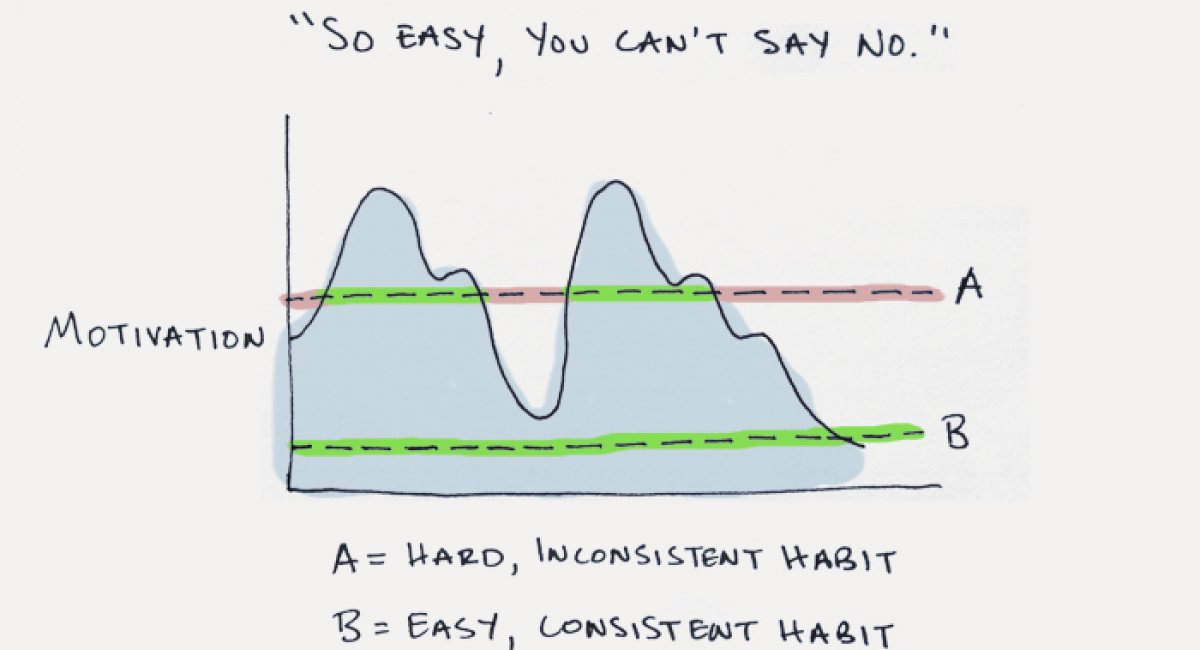
Learning a second language is one of the hardest things you can do. A big, life-long project like learning English needs powerful habits and motivations to keep you going. It all starts with two key strategies:
- A change in thinking: You already are an English speaker; English is not a thing you study, but a thing you use and do.
- A change in behaviour: As an English speaker, English is part of your life and positive habits are a key part of that change.
Creating new behaviour with positive habits will help you change the way you think and how you learn English.
The power of Atomic Habits
James Clear's bestselling book, "Atomic Habits", gives ways you can make big changes one small step at a time. You can harness the power of tiny habits to create huge changes in your life and English learning. The central message is that great results can come through small, consistent habits. He introduces the concept of "atomic habits" — tiny behaviors that, when practiced consistently, are powerful drivers of massive changes.
The laws of Atomic Habits
In order to create new habits or change old ones, you need to follow Clear's four laws:
- Cue: Make it obvious
- Craving: Make it attractive
- Response: Make it easy
- Reward: Make it satisfying
These laws will help you understand your habits, break bad habits and develop new positive Atomic Habits.
Cue—What triggers your habit?
The first step in making a habit is creating a trigger for the habit. That trigger is a cue that signals your brain to do something in particular. Think about a good or bad habit you have. Is there a trigger that makes you start? Creating a new trigger can help you make a new habit. To create a new habit, you should:
- Identify a trigger for your new habit (or an old one you want to break).
- Make the trigger easily noticeable and hard to ignore.
- Link the habit to a specific time, location, or event to establish a routine.
Example: I wanted to get into the habit of running three times a week, so I set a reminder on my phone to notify me and put my running shoes by the front door.
Craving—What motivates your habit?
The key is to make your new habit appealing. This will help your motivation. To make a habit attractive, you should associate it with positive emotions and rewards. Here's how to apply this law:
- Highlight the benefits and rewards of the habit.
- Find ways to enjoy the process and make it satisfying.
- Connect the habit with something you already enjoy.
Example: To make sure I go for my runs, I remember that being fit makes it easier for me to surf for longer (something I really enjoy) and play with my sons (who have too much energy). I also make it more enjoyable for myself by listening to my favourite podcasts (something I don't usually have time for) when I go for a run.
Response—What makes habits easy?
To make something into a habit, you need to make it as simple as you can. The easier a habit is, the more likely you are to stick with it. To make a habit easy, you should:
- Reduce the effort by eliminating barriers and obstacles.
- Scale down the habit to its smallest, manageable version.
- Create an environment that encourages the habit.
Example: To make it easy to run, I block off time in my schedule. If I am running in the morning, I make sure my running gear is ready the night before. And I use an app that tells me what my run for the day should be, so I don't have to think about it.
Reward—What do I get?
Make your habit loop stronger by adding a reward. This law complements the craving aspect by making the habit more enjoyable and reinforcing it positively. To make a habit satisfying, you should:
- Ensure that the reward is immediate or close in time to the habit completion.
- Celebrate your small wins and achievements.
- Make the rewards align with your values and motivations.
Example: I track my runs with my smartwatch and that gives me badges and personal records when I got faster and further. I feel really satisfied when I look at the charts and data that shows my progress. (And also I might have an ice cold beer when I get home!)
—
It's worth writing down what you will do to unlock powerful, small habits that can turbocharge your English progress. What new habits will you create?
In the next post, we will talk about how you can use these laws to create a framework for making new habits and changing old ones.
—
harness the power—control and use the power
establish a routine—create a new way of doing things in a particular order or at a particular time
stick with it—don't give up






